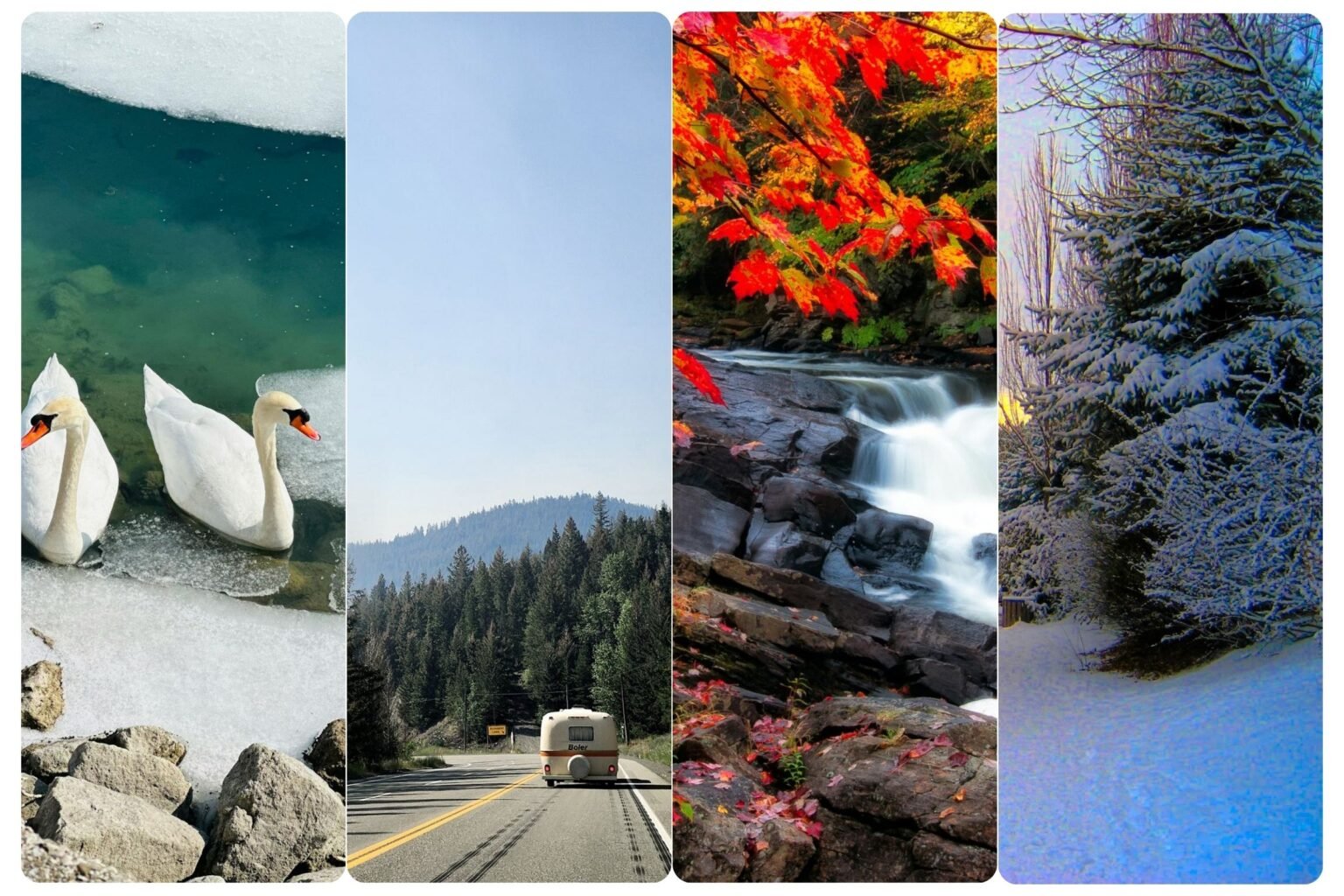Canada, a land of breathtaking natural beauty and diverse landscapes, offers countless destinations for travelers seeking outdoor adventures. Finding the best places to visit in Canada can be overwhelming with so many incredible options to choose from. Whether you’re drawn to majestic mountains, pristine lakes, dense forests, or vibrant coastal regions, Canada’s vast wilderness provides unforgettable experiences for every type of outdoor enthusiast. As we move into 2025, this spectacular country continues to captivate visitors with its unique blend of natural wonders, wildlife encounters, and outdoor activities for all seasons.
Canada is one the most impressive countries in the world.
Barack Obama
This post will help you navigate Canada’s most spectacular destinations, providing insider tips and practical advice to make your Canadian adventure unforgettable. From the iconic Rocky Mountains to the dramatic coastlines of the Maritimes and everything in between, we’ve curated the ultimate list of must-see locations for your Canadian travel bucket list.
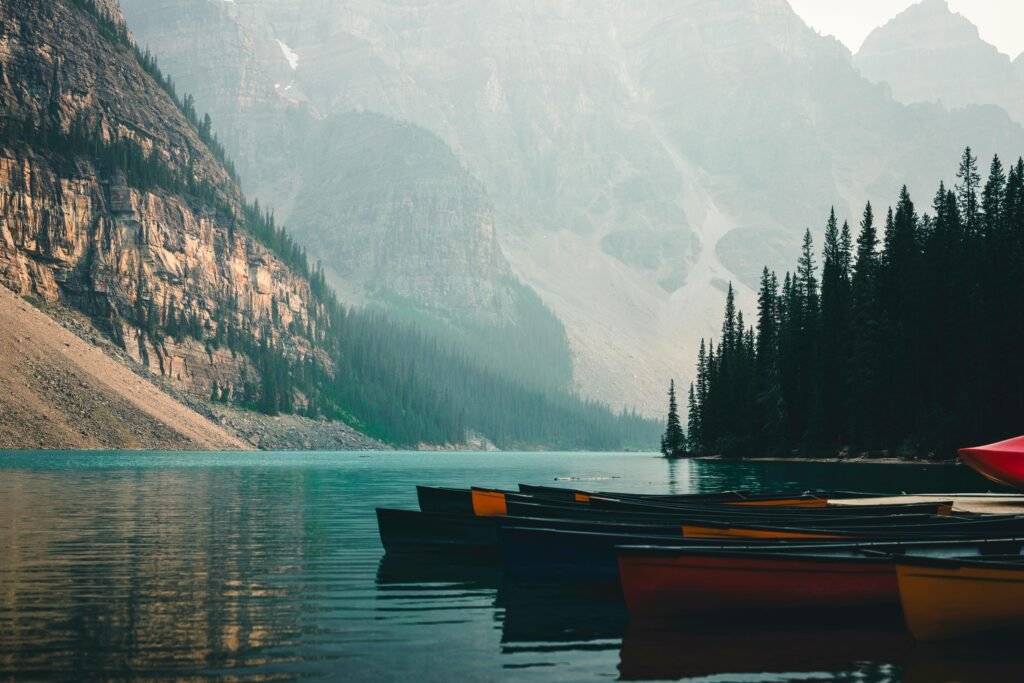
Image: Panoramic view of Moraine Lake in Banff National Park with turquoise waters and mountain backdrop.
I. Why Canada is an Outdoor Paradise: Natural Diversity at Its Finest
If you’re craving a destination that’s big on wilderness, wild beauty, and once-in-a-lifetime landscapes, Canada is calling. With 37 national parks and countless provincial parks, it’s no wonder Canada ranks among the best places to visit for nature lovers in 2025.
A Country of Contrasts: Canada’s Epic Landscapes
What makes Canada stand out? It’s the sheer variety of terrain you can explore—often in the same trip:
- The Rockies: Towering peaks, turquoise lakes, and dramatic vistas await in Alberta and British Columbia.
- Coastal Escapes: Wander the misty rainforests of British Columbia’s Pacific coast or explore the craggy cliffs of Nova Scotia’s Atlantic shores.
- The Far North: Venture into Canada’s Arctic regions for remote adventures and surreal landscapes under the Northern Lights.
- The Prairies: Central Canada offers golden wheat fields, big skies, and quiet solitude.
- Freshwater Galore: With more than 2 million lakes, Canada is home to 20% of the planet’s freshwater—yes, really!
Outdoor Adventures in Every Season
Canada is a four-season playground. Here’s what to expect:
- Summer: Hike through national parks, kayak alongside glaciers, or camp under starlit skies.
- Fall: Watch forests explode into fiery reds and golds—Canada’s fall foliage is next level.
- Winter: Ski the powdery slopes of Whistler or Mont Tremblant, go snowshoeing in the Yukon, or chase the aurora borealis.
- Spring: Spot bears and moose emerging from hibernation, admire waterfalls in full flow, and catch blooming wildflowers in alpine meadows.
II. Best National Parks in Canada: Wilderness Wonders
Canada’s national parks are some of the best places to experience the country’s incredible natural beauty. Whether you want to hike through the Rocky Mountains, watch the stars in a quiet forest, or walk along wild coastal beaches, there’s a park for every kind of nature lover. Here are a few of the most unforgettable national parks you should visit on your Canada adventure.
1. Banff National Park: Canada’s Crown Jewel
If you only visit one national park in Canada, let it be Banff. As the country’s oldest national park (established in 1885), Banff is a bucket-list destination for nature lovers and easily one of the best places to visit in Canada. Tucked into the heart of the Canadian Rockies, it’s a dreamscape of emerald lakes, glacier-capped peaks, and jaw-dropping wildlife.
🗺️ Top Things to See in Banff National Park
- Lake Louise: This iconic turquoise lake, backed by Victoria Glacier, is straight out of a postcard. Pro tip: Visit at sunrise for soft light and fewer crowds.Image: Lake Louise at golden hour
- Moraine Lake: Nestled in the Valley of the Ten Peaks, this surreal, glacier-fed lake will stop you in your tracks. It’s one of the most photographed spots in all of Canada.
- Banff Gondola: Hop on for a scenic ride up Sulphur Mountain and take in 360-degree views of six mountain ranges.
- Johnston Canyon: Hike along elevated catwalks that snake through a dramatic limestone canyon, leading to waterfalls that roar in spring and freeze beautifully in winter.
- Wildlife Encounters: Elk? Check. Bighorn sheep? You bet. Grizzlies and black bears? Also likely. Keep your camera ready—Banff is a wildlife lover’s paradise.

Image: Lake Louise
Insider Tip:
Avoid the summer crowds by visiting during May–June or September–October. Trails are still open, and the weather is lovely. And don’t miss the Icefields Parkway, which connects Banff to Jasper—it’s one of the most scenic drives on Earth.

Image: Hikers on a trail in Banff National Park with mountain views
🏞️ Love nature? You’ve got to see these epic national parks for hiking and wildlife encounters — some of them will make you feel like you’re in a movie scene.
2. Jasper National Park: Wilderness and Dark Skies
Just north of Banff, Jasper National Park is a quieter and wilder alternative that’s perfect for nature lovers. As the largest national park in the Canadian Rockies, it offers dramatic scenery, incredible wildlife, and some of the best stargazing in the world.
Highlights of Jasper:
- Maligne Lake – Take a boat to Spirit Island, one of the most iconic views in Canada.
- Athabasca Falls – A powerful waterfall that shows off the park’s raw natural beauty.
- Columbia Icefield – Walk on a glacier that’s thousands of years old.
- Dark Sky Preserve – Jasper is one of the best places on Earth to see the stars.
- Wildlife Watching – Spot moose, elk, caribou, and even bears in the wild.
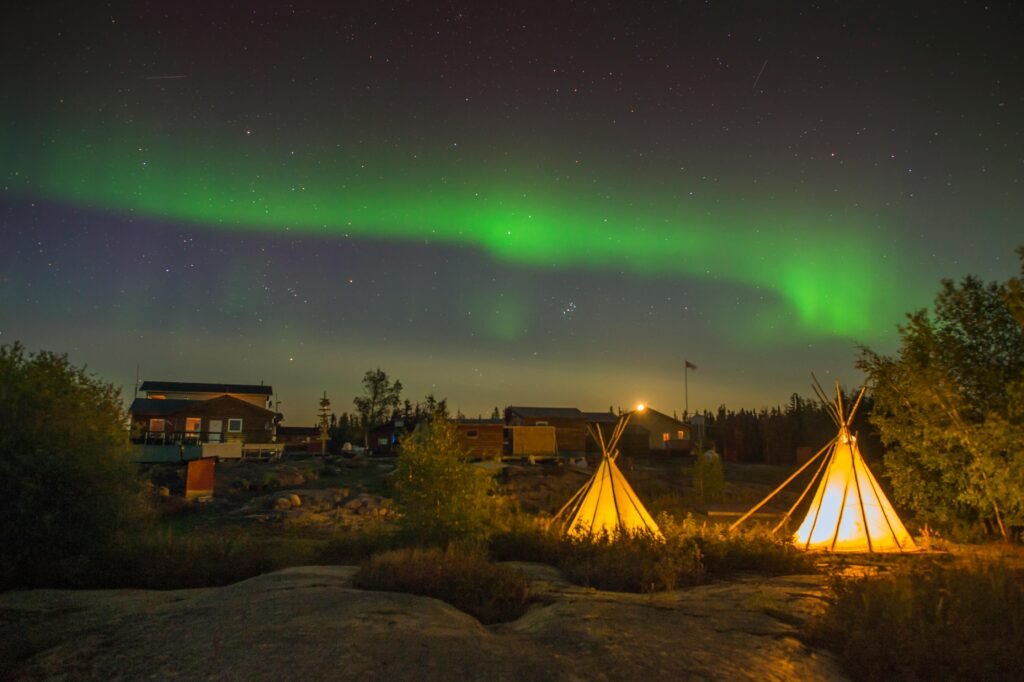
Image: Northern Lights in Canada
Insider Tip:
Visit in October for the Jasper Dark Sky Festival, when the park hosts stargazing events under crystal-clear skies. For a cozy stay, check out Fairmont Jasper Park Lodge—you might even see elk right outside your cabin.
3. Pacific Rim National Park Reserve: Coastal Wilderness
Located on the west coast of Vancouver Island, Pacific Rim National Park Reserve shows off a totally different side of Canada—rugged coastlines, lush rainforests, and wide open beaches. It’s one of the best places to visit in Canada if you love the ocean and want to explore nature at its wildest.
Things to Do:
- Long Beach – A huge stretch of sand that’s great for walking, relaxing, or watching big waves crash during storm season.
- West Coast Trail – A famous 75 km hiking trail through forests and along cliffs. It’s tough but unforgettable (book in advance).
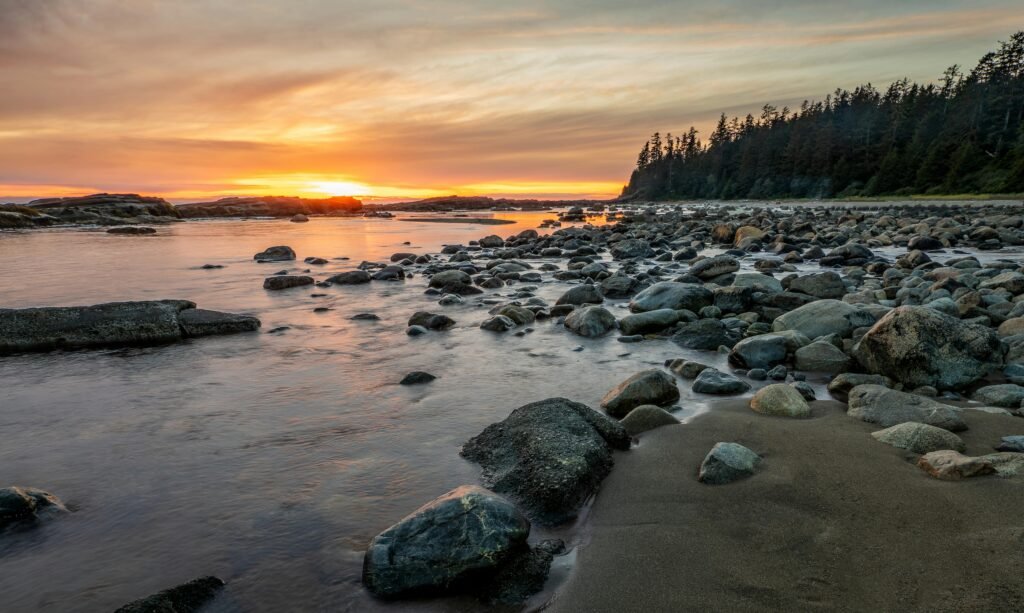
- Rainforest Trails – Easy boardwalk paths take you through beautiful old-growth forest.
- Whale Watching – Join a tour from nearby towns like Tofino or Ucluelet to see gray whales and humpbacks.
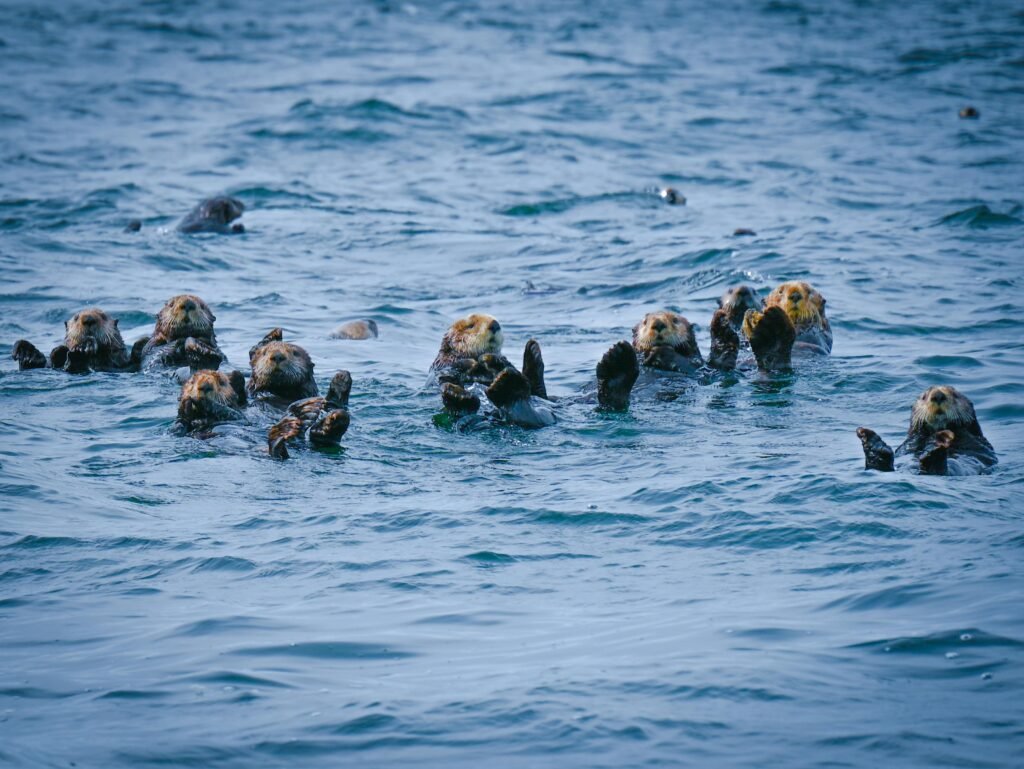
- Surfing – Yes, you can surf here! Try Long Beach or Chesterman Beach if you’re feeling adventurous.
Insider Tip:
Come in winter (November to February) for dramatic storm watching, or visit in summer for warmer weather and outdoor fun like hiking and kayaking.
III. Iconic Canadian Cities with Natural Appeal
Canada isn’t just about vast wilderness—it’s also home to vibrant cities that seamlessly blend urban energy with stunning natural backdrops. Whether you’re after mountain views, coastal vibes, or riverside strolls, these iconic Canadian cities deliver big on both culture and outdoor adventure.
4. Vancouver: Urban Adventures with Mountain Views
Top Outdoor Things to Do in Vancouver:
- Stanley Park – A massive city park with beaches, forest trails, and a scenic seawall you can walk or bike around.
- Grouse Mountain – Hike the steep “Grouse Grind” or take the gondola for epic views of the city and beyond.
- Capilano Suspension Bridge – A thrilling bridge walk 70 meters above a forested canyon.
- Kitsilano Beach – A favorite local beach with soft sand, volleyball courts, and postcard-worthy views.
- Bike the Seawall – Rent a bike and ride the 28 km path that loops around downtown, Stanley Park, and along the waterfront.
Insider Tip:
Vancouver makes a great home base for exploring British Columbia. Take day trips to Whistler, the North Shore Mountains, or hop a ferry to Victoria. The city’s transit system is reliable—so you don’t need a car to enjoy it all.
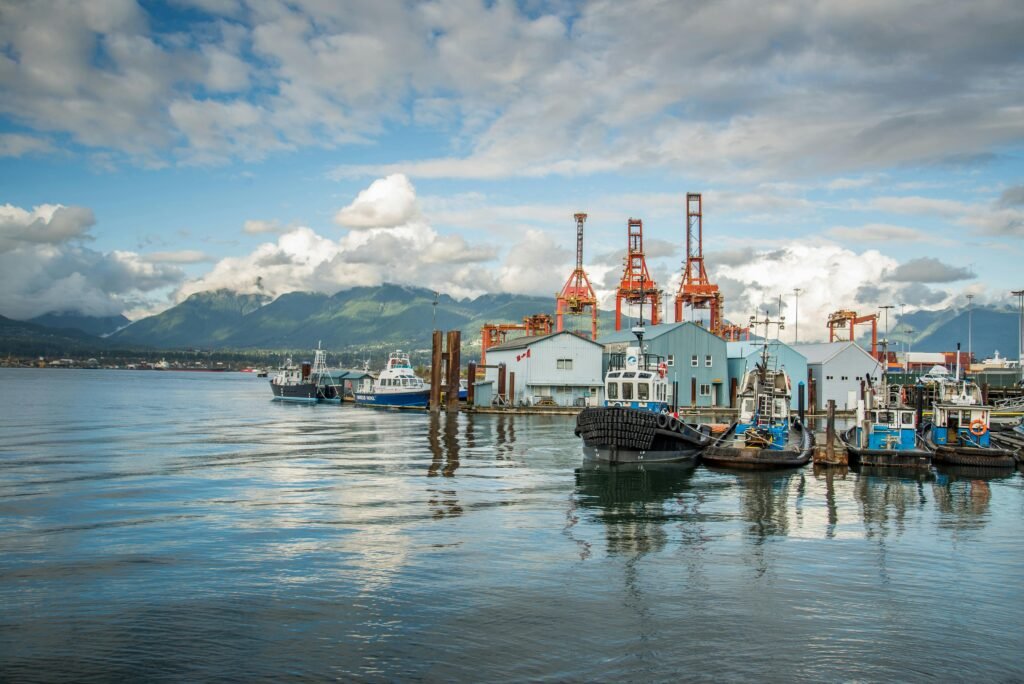
Image: Vancouver skyline with mountains in the background.
5. Quebec City: Old World Charm in North America
Quebec City is like stepping into a European fairytale—without leaving North America. With its cobblestone streets, historic stone buildings, and French-speaking locals, it offers a charming, old-world vibe that’s unique in Canada.
Top things to see and do:
- Old Quebec (Vieux-Québec): Walk through the city’s historic core with narrow streets, cute shops, and cozy cafés.
- Montmorency Falls: Just outside the city, this stunning waterfall is even taller than Niagara Falls.
- Plains of Abraham: A large, scenic park that was once a historic battlefield. Great for walking, biking, or relaxing.
- Château Frontenac: One of the most photographed hotels in the world—it looks like a fairytale castle overlooking the city.
- Winter Carnival: Visit in February to experience one of the world’s biggest and most fun winter festivals.
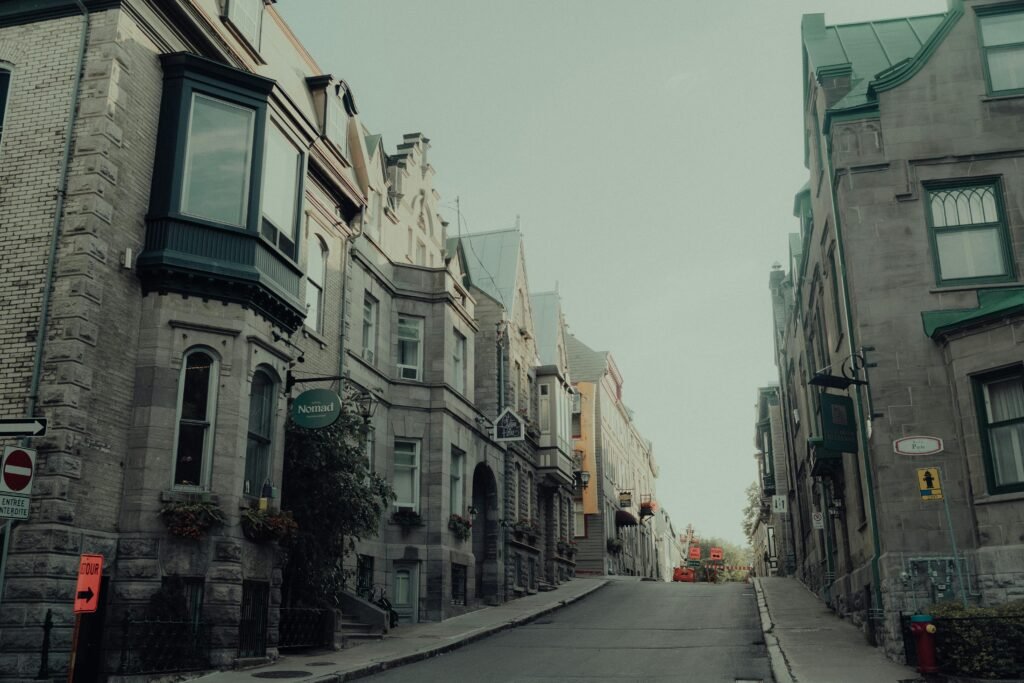
Insider Tip:
Each season brings something special to Quebec City. Winter is magical with snow and lights, summer is full of festivals and outdoor cafés, and fall brings incredible foliage in and around the city.
IV. Canada’s Natural Beauty: Wild Places You’ll Never Forget
Canada isn’t just about cool cities—it’s also home to some of the most stunning natural places in the world. From dramatic coastlines and giant mountains to peaceful forests and clear lakes, there’s something for every nature lover. Whether you’re hiking, spotting wildlife, or just enjoying the views, these amazing outdoor spots deserve a place on your Canada travel list.
6. Bay of Fundy: Home to the World’s Highest Tides
Located between New Brunswick and Nova Scotia, the Bay of Fundy is one of Canada’s most unique natural wonders. It holds the record for the world’s highest tides—rising and falling as much as 16 meters (52 feet) twice a day. It’s one of the best places to visit in Canada for dramatic landscapes, rare wildlife, and hands-on outdoor adventures.

Image: Bay of Fundy, Canada
Top things to do around the Bay of Fundy:
- Hopewell Rocks: Walk on the ocean floor during low tide, then come back to kayak around the same flowerpot-shaped rocks at high tide.
- Fundy National Park: Hike scenic trails through forests and waterfalls with epic views of the bay.
- Whale Watching: Head out on a boat tour to see humpbacks, minkes, and even endangered North Atlantic right whales.
- Cape Enrage: Explore this rugged headland with cliffs, a historic lighthouse, and zipline adventures.
- Fossil Hunting: Discover 300-million-year-old fossils along the rocky shoreline.
Insider Tip:
Time your visit with the tide charts! The difference between high and low tide is massive—and seeing both gives you the full Bay of Fundy experience.
7. Northern Lights in Yukon: A Magical Show in the Sky
If seeing the Northern Lights is on your bucket list, head to Yukon in Canada’s far northwest. With its dark skies, low light pollution, and perfect location under the auroral oval, Yukon is one of the best places to visit in Canada to catch this natural wonder.
Best Ways to Experience the Northern Lights in Yukon:
- Whitehorse Base: The capital city is an easy starting point with lots of guided aurora tours.
- Tombstone Territorial Park: Watch the lights dance above rugged peaks in this stunning park.
- Aurora Resorts: Stay at lodges like Northern Lights Resort & Spa, designed for cozy sky watching.
- Adventure Tours: Combine aurora hunting with snowshoeing, dog sledding, or relaxing in hot springs.
- Photography Classes: Join workshops to learn how to capture the perfect Northern Lights photo.
Insider Tip:
Plan your visit between late August and mid-April—especially September or March—for the clearest skies. And bundle up! Winters here can be extremely cold, sometimes dipping below -30°C (-22°F).

Image: Northern Lights display over a lake in Yukon.
V. Island Paradises and Coastal Gems
Canada isn’t just mountains and maple trees—it also has some stunning island escapes. Along the coastlines, you’ll find hidden coves, charming small towns, ancient rainforests, and ocean adventures waiting to be explored. Whether you’re after dramatic surf, quiet harbors, or rich Indigenous cultures, these coastal gems are full of surprises.
8. Vancouver Island: A Coastal Escape Full of Nature and Charm
Vancouver Island is a top travel destination in Canada for anyone who loves the outdoors. It’s full of beautiful forests, quiet beaches, and small towns with lots of personality. Whether you’re looking for an adventure or a peaceful getaway, the island has something for everyone.
Best things to do on Vancouver Island:
- Victoria: Walk around the capital city’s pretty harbor, enjoy afternoon tea, and visit colorful flower gardens.
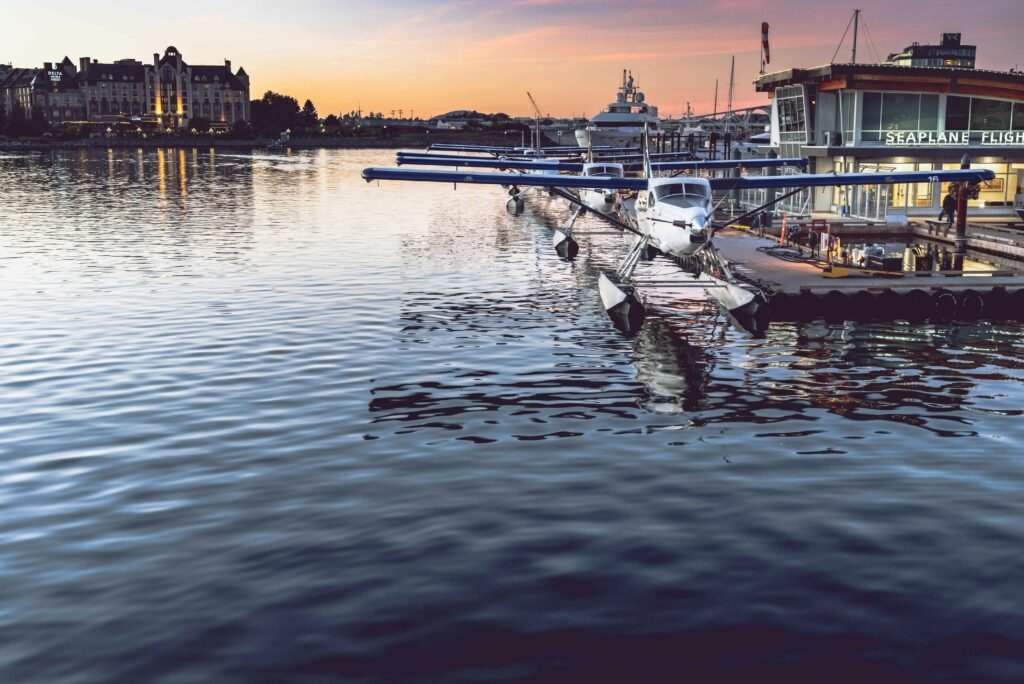
Image: Victoria on Vancouver Island, Canada
- Tofino: A cool beach town where you can surf, spot whales, or just watch big waves crash during storm season.
- Cathedral Grove: A magical forest with huge, ancient trees—some are more than 800 years old!
- Wild Pacific Trail: A scenic hike by the ocean with amazing views and fresh sea air near Ucluelet.
- Butchart Gardens: A world-famous garden that used to be a rock quarry—now it’s filled with flowers all year round.
Insider Tip:
It’s best to rent a car to explore the island, especially outside the city. The drive from Victoria to Tofino is long (about 5 hours) but incredibly beautiful.
9. Cape Breton Island: Beautiful Views and Celtic Culture
Cape Breton Island in Nova Scotia is one of the best places to visit in Canada if you love road trips, music, and nature. It’s famous for its ocean views, friendly communities, and strong Scottish roots.
Top things to do on Cape Breton Island:
- Cabot Trail: Drive this scenic 298 km loop along cliffs, forests, and beaches. It’s one of the most beautiful drives in the world.
- Skyline Trail: Go hiking in Cape Breton Highlands National Park for amazing views over the ocean. You might even spot a moose!
- Fortress of Louisbourg: Step back in time at this large historic site where actors dress like people from the 1700s.
- Celtic Music: Enjoy live Scottish-style music at local gatherings called ceilidhs, especially in small towns.
- Baddeck: Visit this peaceful lakeside town and learn about inventor Alexander Graham Bell at the local museum.
Insider Tip:
Come in October for the Celtic Colours Festival—a fun event with music, dancing, and colorful fall leaves. And if you’re driving the Cabot Trail, go clockwise for the best views and easier turns.

Image: Cape Breton Island, Canada
VI. Why Gohub eSIM Is a Smart Travel Companion in Canada
Whether you’re exploring remote trails in Banff or navigating the streets of Vancouver, staying connected is key. Here’s why Gohub eSIM is your travel MVP:
- Instant Activation: No need to find a SIM card kiosk—get connected the moment you land at any major Canadian airport.
- Flexible & Affordable: Only pay for what you need. Choose from a range of data packages that fit your trip length and usage.
- Strong Nationwide Coverage: From big cities to backcountry roads, Gohub keeps you online across Canada’s vast terrain.
- Easy Navigation: Use maps, hiking apps, and transit info without scrambling for Wi-Fi—especially helpful in remote areas.
- Safety First: Stay in touch even when off the grid. Ideal for outdoor adventurers who need reliable service in case of emergency.
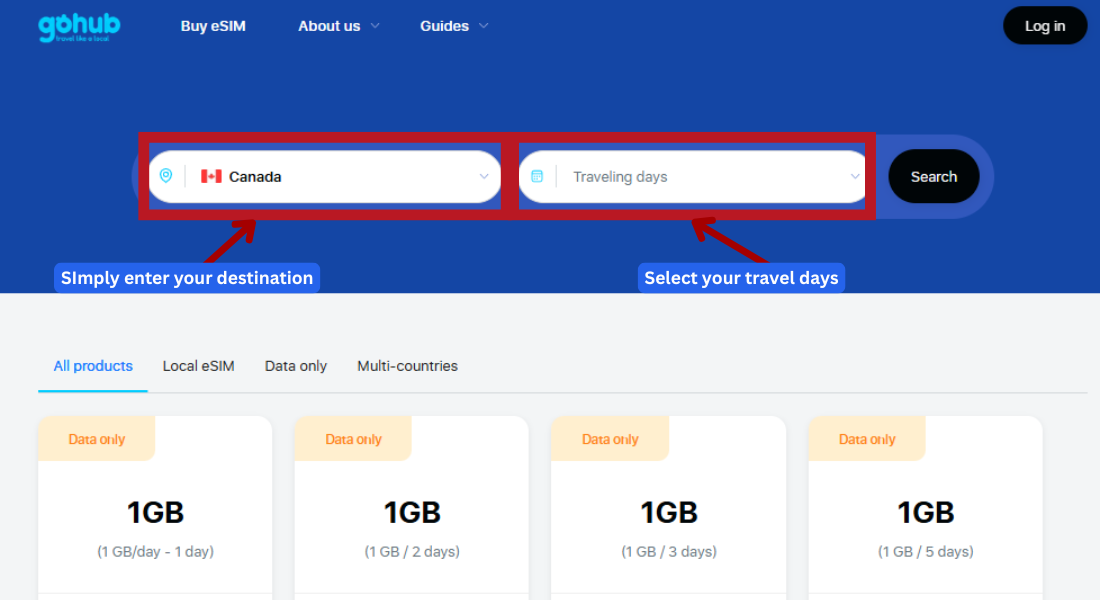
Image: Screenshot of the GoHub eSIM webpage, highlighting the destination input field with “Canada” selected, illustrating how users can easily search for eSIM data plans.
👉 Explore GoHub’s Canada eSIM plans now
With Gohub eSIM, you can easily navigate between the best places to visit in Canada, check weather conditions before outdoor activities, find hidden gems, and share your Canadian adventure with friends and family back home.

Image: Traveler using smartphone with eSIM to navigate a hiking trail.
VII. Seasonal Considerations for Canadian Travel
Canada is a country of four true seasons—and knowing when to go can really shape your experience. Whether you’re chasing summer adventures or snowy magic, here’s how to make the most of every season across Canada’s diverse regions.
Best Time to Visit by Region
Because of its size, Canada’s seasons vary a lot depending on where you go. Here’s a quick breakdown of when to visit for the best weather and experiences:
- Banff & Jasper (Rocky Mountains):
- June–September: Great for hiking, lakes, and wildlife spotting.
- December–March: Ideal for skiing and snow activities.
- Vancouver & Victoria:
- May–September: Warm, dry weather perfect for outdoor exploring.
- Spring & Fall: Fewer tourists and still great weather.
- Quebec & Ontario:
- September–October: Stunning fall colors and cozy vibes.
- January–February: Think winter carnivals, snow, and skating.
- Atlantic Canada (Nova Scotia, Newfoundland, etc.):
- June–September: Pleasant temperatures, whale watching, and coastal drives.
- Northern Canada (Yukon, Northwest Territories):
- August–April: Best for Northern Lights viewing.
- June–August: Milder temps and long daylight hours.
Winter in Canada: A Snow Lover’s Dream
From December to March, Canada turns into a winter wonderland. If you love snow and don’t mind bundling up, here are some must-try cold-weather experiences:
- Skiing & Snowboarding: Head to iconic resorts like Whistler, Banff, and Tremblant.
- Ice Skating: Glide across Ottawa’s Rideau Canal—the world’s largest natural skating rink.
- Dog Sledding: Try this thrilling Arctic tradition in places like Quebec or the Yukon.
- Ice Fishing: Brave the chill and reel in a catch on a frozen lake.
- Winter Festivals: Celebrate the season with Quebec Winter Carnival, Ottawa’s Winterlude, and more snowy spectacles.

Image: Canada’s Snowy Wonderland
Summer Adventures in Canada’s Great Outdoors
If you love nature, summer (June to September) is the perfect time to explore Canada. The weather is warm, the days are long, and the outdoors are calling! Whether you’re hiking, paddling, or spotting wildlife, Canada’s wilderness offers something for every adventurer.
- Hiking: Canada is full of scenic trails. Choose from easy walks in national parks to challenging mountain treks that take several days.
- Paddling: Canoe or kayak on countless lakes and rivers, including iconic routes like Bowron Lakes Circuit.
- Wildlife Watching Keep your eyes open! You can spot bears in British Columbia, whales on the coasts, and birds in every province..
- Camping: Stay close to nature by camping in a tent or trying unique spots like Canada’s oTENTik cabins. Campgrounds range from easy-access sites to remote backcountry hideaways.
- Fishing: Love to fish? Canada’s lakes and rivers are home to salmon, trout, pike, and many other species.
VIII. Practical Tips for Canadian Wilderness Travel
If you’re heading into the great Canadian outdoors, a little preparation goes a long way. Whether you’re hiking in the Rockies or camping near the coast, here’s how to stay safe, comfortable, and eco-friendly while visiting Canada’s most stunning natural areas.
What to Pack for Outdoor Adventures
The weather—and terrain—can change quickly in Canada’s wilderness, so it’s important to bring the right gear:
- Layered Clothing: Mornings can be chilly, afternoons warm, and mountain weather can shift in minutes. Wear breathable base layers and bring a warm jacket.
- Rain Gear: Especially important in coastal regions like British Columbia—always pack a waterproof jacket and pants.
- Sturdy Footwear: Hiking boots with good grip are a must. If you’re exploring wet areas, waterproof boots will keep your feet dry and happy.
- Bear Spray: In places like Banff or Jasper, this is essential. Learn how to carry and use it properly—just in case.
- Navigation Tools: Bring a paper map and compass, even if you have GPS. Phone signals can drop fast in remote areas.
Wildlife Safety in the Canadian Backcountry
Canada is home to amazing wildlife—from moose and elk to black bears and grizzlies. Stay safe and respectful with these simple tips:
- Keep Your Distance: Stay at least 100 meters (328 feet) from bears and 30 meters (98 feet) from other big animals like moose or elk.
- Make Noise: Let animals know you’re coming—especially when hiking in dense forest or around blind corners.
- Store Food Safely: Use bear-proof lockers at campgrounds or carry a bear canister in the backcountry.
- Be Alert at Dawn & Dusk: These are peak times for animal activity—stay extra aware.
- Don’t Feed Wildlife: Even tossing a snack wrapper can attract animals. Always clean up and pack out everything.
Travel Sustainably and Leave No Trace
Canada’s parks are pristine—let’s keep them that way! Follow these eco-friendly tips to travel responsibly:
- Stick to Trails: Going off-path can damage delicate plants and cause erosion.
- Pack Out Your Trash: Whatever you bring in—take it out. This includes food scraps and biodegradable items.
- Respect Animals: Watch from afar, never feed them, and avoid disturbing their natural behavior.
- Support Conservation: Many parks offer donation options—every dollar helps protect Canada’s natural wonders.
- Choose Eco-Friendly Tours: Look for guides or outfitters with strong sustainability practices and small group sizes.
Whether you’re a first-time visitor or a seasoned hiker, these practical tips will help you make the most of your trip to Canada’s wilderness—while keeping yourself safe and nature protected for the next explorer.
IX. Conclusion: Your Canadian Wilderness Adventure Awaits
From the jagged peaks of the Rockies to the tide-swept coastlines of the Atlantic and Pacific, the best places to visit in Canada are a dream for outdoor lovers. Whether you’re chasing waterfalls, spotting wildlife, paddling glassy lakes, or hiking alpine trails, Canada’s epic landscapes are built for big adventures—and even bigger memories.
As you plan your 2025 trip, remember: Canada rewards curiosity. Sure, the famous spots are iconic for a reason—but mixing in a few off-the-beaten-path gems will give you a deeper, more authentic experience of this vast country.
Before you set off, make sure you’re set up for smooth travels with a Gohub eSIM. Whether you’re checking trail maps in Banff, watching the Northern Lights in the Yukon, or navigating Quebec’s charming cities, having reliable internet means you can stay safe, connected, and spontaneous.
🎒Stay connected. Stay adventurous. And let Canada wow you, one wild view at a time.

Image: A Canadian lake with a canoe in the foreground.
Don’t forget to grab your Gohub eSIM before takeoff—for instant connectivity from the moment you land. No roaming fees, no SIM card swaps—just smooth coverage across Canada.
🚐 Planning a Canadian road trip next? Here’s a guide to the best road trips in Australia too — because once you start driving, you won’t want to stop.


